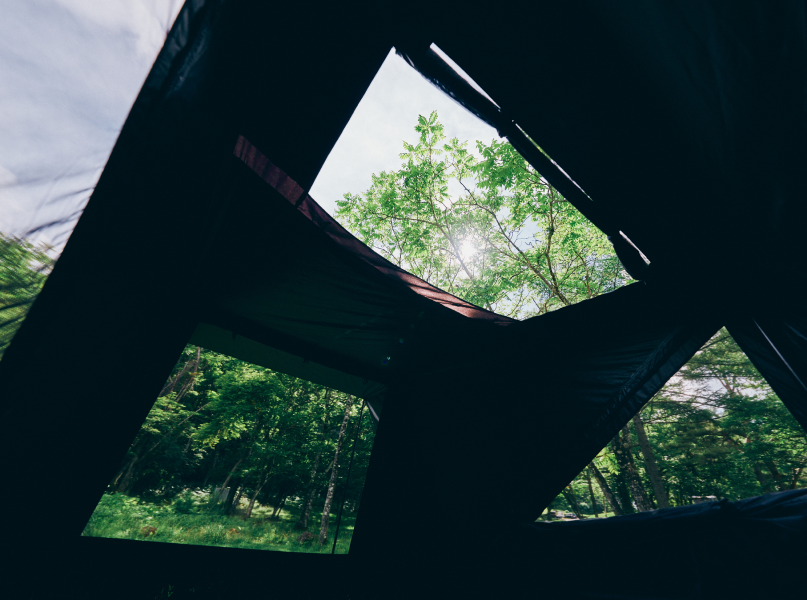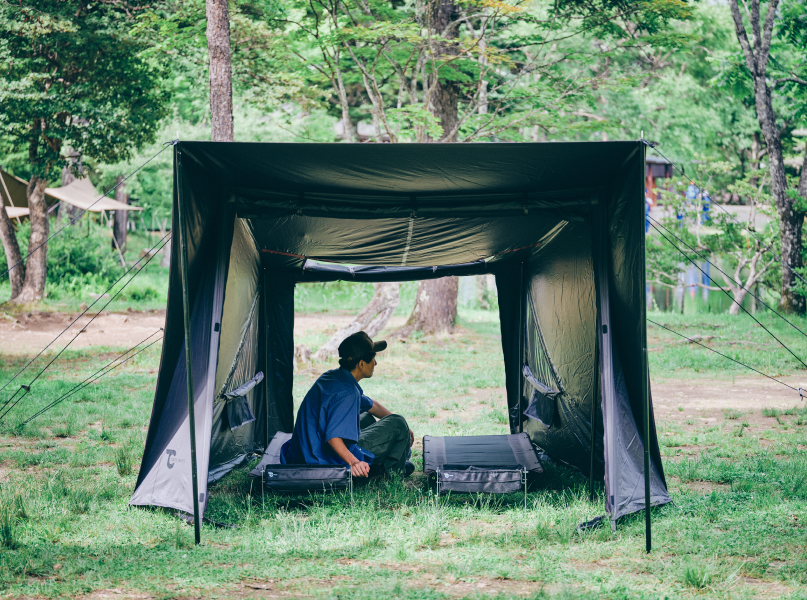MONTOP開発者たちの物語
We aimed to create a tent that would frame the natural scenery and make the transitions throughout the day seem even more beautiful.

Due to the structure of regular tents, it is difficult to install a window at the top, which means that many of them end up being closed-in spaces.
We wanted you to feel closer to nature, to enjoy the beautiful scenery, and to enjoy the scenery from angles you normally wouldn't see. This was the concept behind the tent design.

Montaupe development background
``It's a waste to be outside and not be able to see the scenery because of the noise from the tent...'' Based on the slight discomfort that I suddenly felt when using a commercially available tent, I started developing a tent. I went on.

initial idea
First, we use hypotheses, sketches, and 3D to verify the question, ``How can we make the outside scenery look beautiful?'' At the beginning of development, there were some unique ideas such as adding folding picture frames to the windows.

Until this shape is created
We paid particular attention to the design, taking into consideration the concept and space design. The design is based on the KUBERU bonfire stand, and the TOKYO CRAFTS brand has been devised to create a sense of unity.

space design
After thinking about how to make the outside look more beautiful when spending time indoors, we decided to use black PU coating for the tent fabric.
Not only does it block out strong sunlight, but it also has a visual effect that makes it look like the outside scenery was cut out through a camera's viewfinder.
Thanks to the black PU coating, the design allows you to be aware of the beautiful scenery and its ``natural'' nature. In addition, in order to maintain the concept even when the inner tent is attached, we have carefully designed the placement of the upper TPU window (transparent window that allows you to enjoy the outside scenery) and the side windows that allow you to see the outside scenery even when lying on your back. has been done.

window structure
The most interesting and difficult part of this tent was actually the structure of the upper roof. How can we create a structure that looks beautiful, allows the door to be easily closed, and prevents rain from flooding? We are testing various structures.

test
We conducted wind resistance tests and rainfall tests repeatedly until the structure passed the maximum wind speed standard of 20 to 25 m/s and did not flood even in rainy weather.

A comfortable space
A skirt is used at the bottom of the tent so that you can stay comfortably indoors. Designed to be used all year round, regardless of the season.
The side flaps at the back are also ingenious and can be pulled to prevent rain and wind while encouraging air circulation from the bottom. On days when it is rainy and windy, you can safely circulate the air while protecting your indoor space.
You can also install TPU windows ( transparent windows that allow you to enjoy the outside scenery ), so you can enjoy the warmth of the outdoors even in winter.

The shape we arrived at
The shape was arrived at after passing wind resistance tests and rain tests.

The mesh on the upper skylight can be removed, allowing you to directly feel the changing nature.

Even if you attach the inner tent and place two cots, you can use it spaciously.

The front entrance should be as wide as possible. The entrance and exit of the inner tent is also designed to be both easy to open and provide a sense of openness.
By adding an eave to the front, we aimed to create a space that is easy to work in, even in sudden changes in weather.

You can enjoy the outdoors even when you are indoors, making spending time in nature even more enjoyable. Such a tent has been completed.
 View product page
View product page
STORIES





